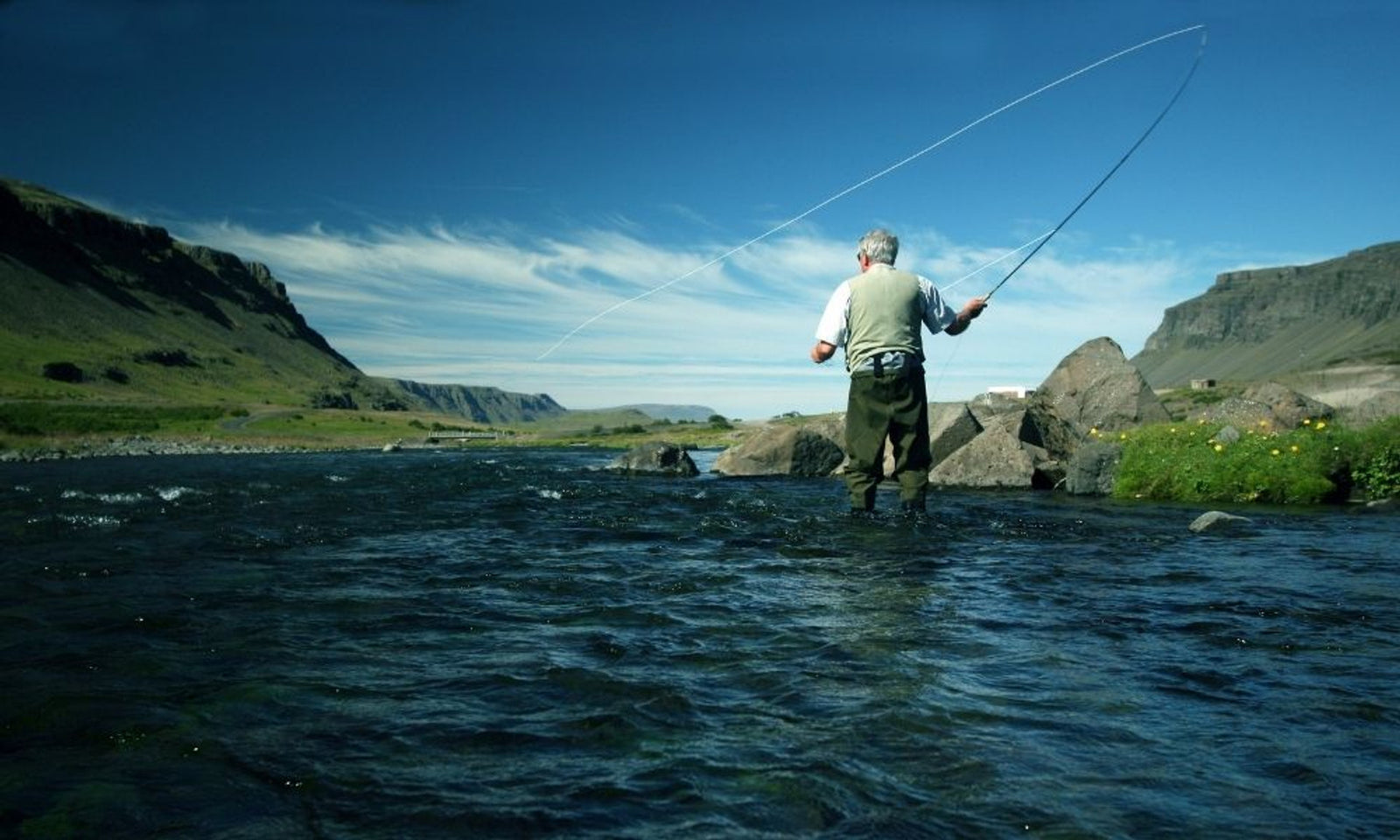How To Dress for Fly Fishing From Head To Toe

Fishing doesn't require a uniform per se, but it helps to feel comfortable and safe. By knowing how to dress for fly fishing from head to toe, you can prioritize certain accessories and clothing items over others.
Weather Conditions
Depending on the weather, you might need different attire for fly fishing.
When It's Hot
The heat for summer fly fishing can be overbearing at times. Depending on where you're from, the humidity may be so potent that the stickiness makes you feel like you're walking through syrup. The extreme heat affects you rapidly and causes dehydration, so it’s imperative to choose garments that wick sweat and cool you down while remaining breathable. The clothing should absorb perspiration and dry quickly in conjunction with wicking away moisture.
Hopefully, moisture-wicking garb reduces the possibility of chafing, seeing as that's a common problem for any activity in steamy weather. But when your clothes are rubbing against your body, especially from casting your rod, you need something forgiving to your skin.
When It's Cold
Regardless of how strong you think you are or immune to winter weather, being on the ice-cold water will hit you like a ton of bricks. Warmth escapes from our heads and cores at an alarming rate. For that reason, the key to fighting these bitter cold months is to protect these areas to the best of your capabilities.
Keeping your body warm and toasty is crucial, but keeping your clothes dry might be more important. Even if it is chilling outside, continuous movement will cause you to sweat and chafe. Therefore, some of the same principles that you use for summer apparel you will repeat when the temperature drops.
Rainy Days Ahead
One of the most prevalent problems is the lack of preparation for tumultuous weather, most notably rain. Even a tiny pop-up shower is enough to ruin the day, figuring that the only water you were going to touch was the body of water you set up in.
The best strategy for preventing this faux pau is to thoroughly check the weather before leaving. Only looking for the day may not be enough information. Instead, check out the hour-by-hour breakdown. It's better to be safe than sorry, so having a set of rain gear will come in handy if Mother Nature doesn't wish to cooperate.
Helpful Tips
While you might be familiar with the basics of fly fishing, check out our list of helpful tips to make sure you’re fully prepared.
Staying Mobile
You want to feel as comfortable as possible if you're going to be off the land the whole day. Hence, you should wear clothes that are light and allow for maximum mobility.
Fish can attack your lure at any time, and you need to be able to reel them in without any complications. Sporting restrictive clothing will make you feel sluggish and confined. Fly-fishing clothing should be comfortable, ultralight, and adaptable.
Dress in Layers
Dressing for one specific situation may leave you in a state of regret by either leaving you too chilly or feeling like you’re roasting from the extra apparel. When the weather is in limbo between seasons, it might be freezing in the morning and pleasant in the afternoon. With the inconsistencies, dressing in layers lets you stay warm and cool down when necessary.
UV Protection
The sun does not play favorites. Even during winter, it still may cause sunburn and dehydrate you. An enthusiastic angular should be aware of the damage the sun can do to your health, even if the effects aren't immediately noticeable. A yearly appointment with the dermatologist ensures that no severe conditions slip through the cracks. In the meantime, applying sunblock is the best strategy for UV protection.
Durability
It would be a mistake to try and skimp out when shelling out a few extra bucks for quality fishing gear. Usually, the costlier the apparel, the more durable it is. Enhancements like long-lasting zippers, extra cushioning at the knees, and cross-stitched shirts are what make the purchase worthwhile.
Companies have created garments that can survive the most extreme conditions. The moral of the story is not to cut corners and go fishing in a pair of ordinary jeans and a windbreaker—you'll regret it immediately.
Clothing Items
Make sure to wear the appropriate attire when you set out on your fly fishing journey.
Jackets
Try to avoid donning thick coats as much as possible. Alternatively, try layering numerous shirts with a moderate or ultralight jacket. When fly-fishing, your arm's maneuverability is crucial for making casts. Casting in a bulky coat is not only inconvenient, but your accuracy will also suffer. Grabbing a vest or jacket specialized for fly fishing will keep you comfortable and keep the tools of the trade more accessible.
Pants
Wearing trousers gives you extra warmth and protects you from the sun's rays. In the summer, they can effectively protect you from floating critters rummaging around your legs. However, pants aren't an absolute necessity if you feel more comfortable in shorts, especially on a boat. Everyone has varying deciding factors, so there isn't a one-size-fits-all solution.
Hats & Buffs
A hat is among the most crucial accessories to take while fishing. Not only does it protect your face, but it also minimizes the shine from the sun, allowing you to see clearly. Although any hat is preferable to none, try to avoid wearing humongous hats.
Large hats may provide excellent sun protection, but they are pretty inconvenient when you're in action. A baseball cap protects you while not getting in the way of any action you need to take. One more crucial piece of attire to remember is a buff. Buffs are fantastic items that deliver better sun protection for your neck and face.
Eyewear
Your eyes are an often-overlooked aspect that the sun makes vulnerable. Wearing low-quality sunglasses may lead your eyes to work harder in bright conditions, causing long-term damage. Strong sunglasses with complete coverage protect against dangerous UV rays all day and help minimize the risks. One pro tip is that the tint of the glasses' lenses should closely match the color of the water.
Gloves
Wearing gloves helps if you have a light complexion or plan on fishing for an extended amount of time. Neglecting your hands may cause them to feel like they are on fire by the end of the day. You can find a pair of lightweight gloves that don't hamper your dexterity and protect you from the sun's overpowering glare.
Footwear
If you're going to stay on land or in a boat, your standard hiking boot will suffice—especially one that's comfortable for walking. Conversely, if you plan on staying in the water for multiple hours, go with wading boots and replace the stocking foot of your waders with a neoprene guide guard wading sock.
Remember, you need to feel comfortable while fishing. That’s why it’s important to have a game plan on how to dress for fly fishing head to toe that keeps you comfortable while you enjoy the whole experience. Browse Ed's Fly Shop fly fishing shop online for all your essentials. We are more than happy to help with any questions you may have—and we even offer a price match guarantee!


